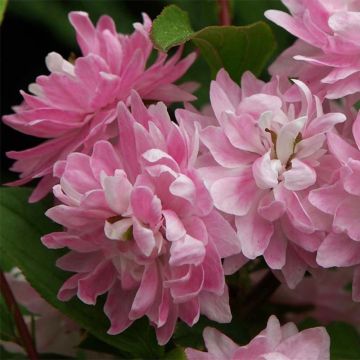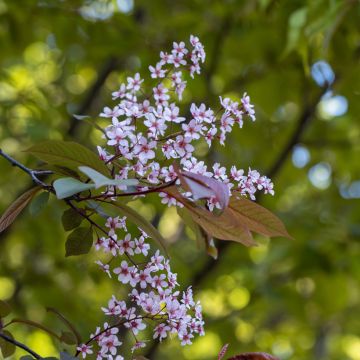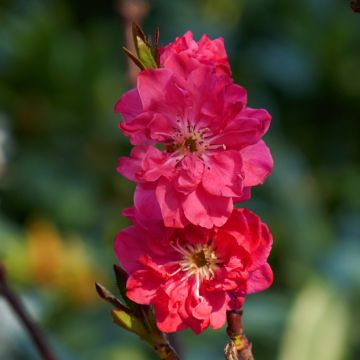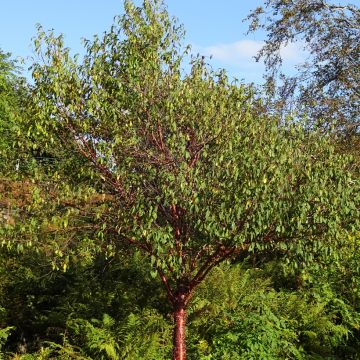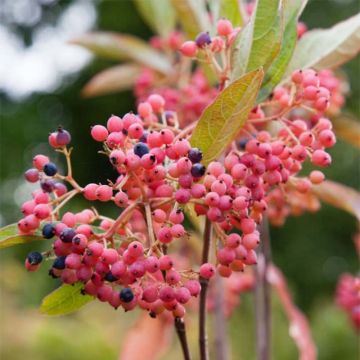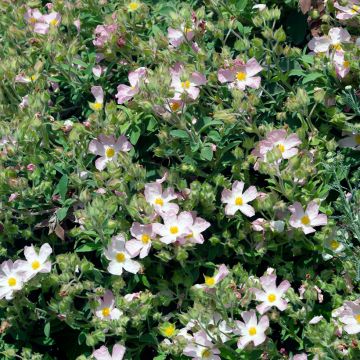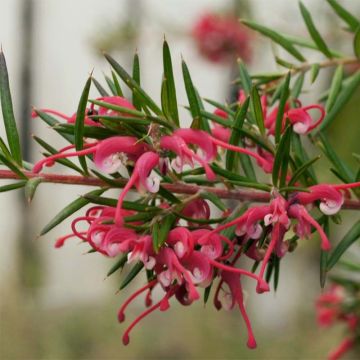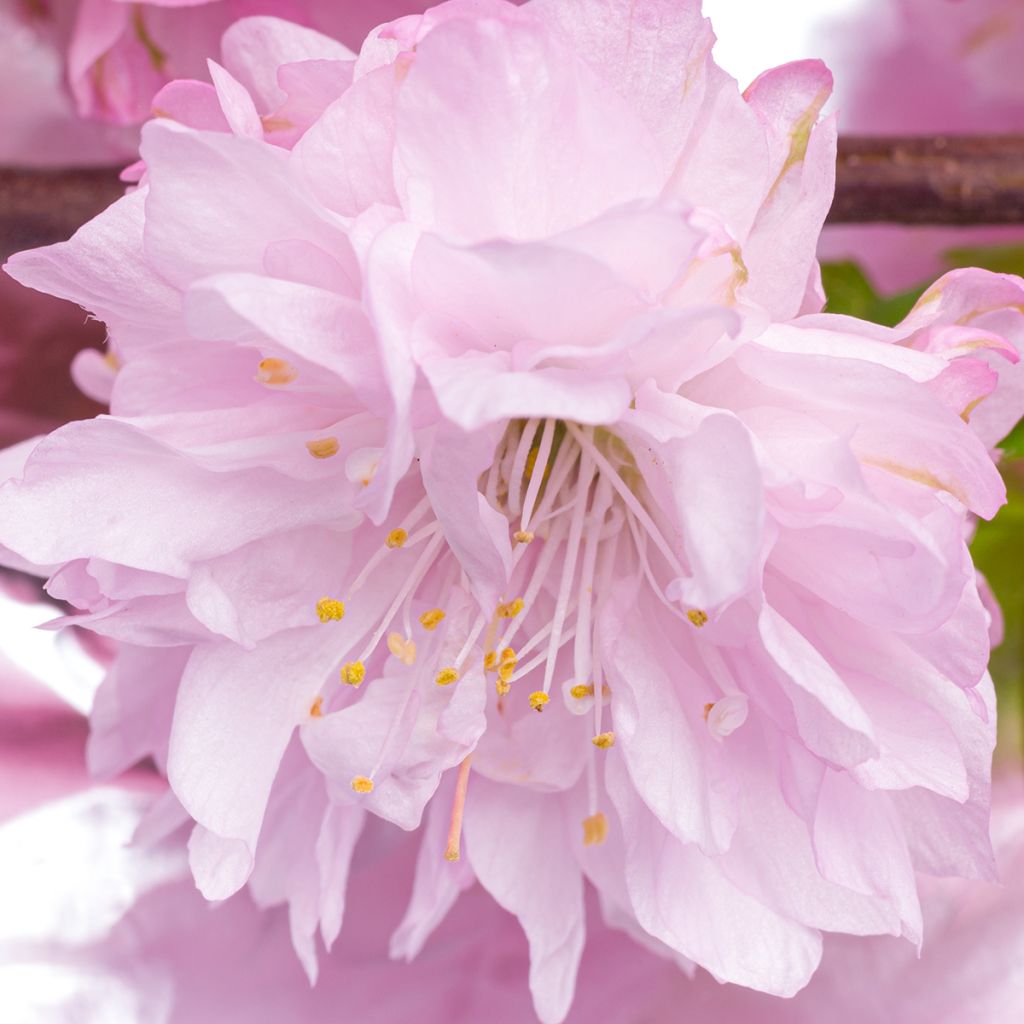

Prunus triloba Rosenmund - Flowering Almond
Prunus triloba Rosenmund - Flowering Almond
Prunus triloba Rosenmund
Flowering Almond, Flowering Plum, Dwarf Flowering Almond
Why not try an alternative variety in stock?
View all →This plant carries a 24 months recovery warranty
More information
We guarantee the quality of our plants for a full growing cycle, and will replace at our expense any plant that fails to recover under normal climatic and planting conditions.
From €5.90 for pickup delivery and €6.90 for home delivery
Express home delivery from €8.90.
Does this plant fit my garden?
Set up your Plantfit profile →
Description
Prunus triloba 'Rosenmund' is a small deciduous shrub with spring flowering. It is covered with numerous small deep pink pompoms distributed along the reddish branches. The pinkish red floral buds, appear before the leaves. It is cold-resistant and easy to grow in ordinary soil, in full sun or partial shade. Plant it sheltered from strong winds and cold drafts. It will make a sensation as a stand-alone plant in a small garden, in a flower bed, in ainformal flowering hedge, or even in a large container.
From the Rosaceae family, Prunus triloba is a small deciduous shrub, native to China and a cousin of peaches, cherries, and apricots. The 'Rosenmund' variety is appreciated for its double flowers with a slightly deeper pink colour. This Chinese almond tree forms an upright shrub, densely branched and slightly spreading over time. Its branches tend to slightly droop. It reaches between 2 and 3 m in all directions. Its brownish branches remain decorative in winter when the shrub is leafless. In March-April, its almost red-pink buds are densely distributed on the branches. Once the flowers are open, they almost cover the bark. Its double flowers measure about 3 cm in diameter. They are followed by deciduous, 3 to 6 cm long, elliptical, and slightly toothed leaves. Sometimes tinged with pink when budding, they are green and turn yellow in autumn before falling.
The 'Rosenmund' Chinese Almond Tree deserves a special place in a small garden where its modest development is a real asset. Plant it as a stand-alone on a lawn. In a large garden, it can integrate as a background plant in a flower bed or in an informal flowering hedge. Pair it with shrubs that also announce spring, such as Abeliophyllum distichum 'Roseum' with pale pink and fragrant flowers or the Japanese Quince 'Jet Trail' with white flowers. Consider incorporating some evergreen shrubs to ensure the winter decor when their branches are leafless.
Plant some spring flowering bulbs at its base, such as 'Erlicheer' narcissus or 'White Magic' muscari.
Cut some budding branches to make beautiful bouquets, or even indulge in Ikebana, the Japanese art of floral arrangement.
Report an error about the product description
Plant habit
Flowering
Foliage
Botanical data
Prunus
triloba
Rosenmund
Rosaceae
Flowering Almond, Flowering Plum, Dwarf Flowering Almond
Cultivar or hybrid
Other Prunus
Planting and care
Prunus triloba 'Rosenmund' prefers a sunny or slightly semi-shaded exposure. Opt for a moist and well-drained soil. Choose a location sheltered from strong winds that can damage the flowers. Prune back after flowering to encourage the plant to produce new flowering branches. To shape Prunus triloba 'Rosenmund' into a tree, prune the lower branches to the desired height. Remove dead branches in winter. It may be susceptible to attacks from aphids or scale insects in summer.
Planting period
Intended location
Care
This item has not been reviewed yet - be the first to leave a review about it.
Spring-flowering shrubs
Haven't found what you were looking for?
Hardiness is the lowest winter temperature a plant can endure without suffering serious damage or even dying. However, hardiness is affected by location (a sheltered area, such as a patio), protection (winter cover) and soil type (hardiness is improved by well-drained soil).

Photo Sharing Terms & Conditions
In order to encourage gardeners to interact and share their experiences, Promesse de fleurs offers various media enabling content to be uploaded onto its Site - in particular via the ‘Photo sharing’ module.
The User agrees to refrain from:
- Posting any content that is illegal, prejudicial, insulting, racist, inciteful to hatred, revisionist, contrary to public decency, that infringes on privacy or on the privacy rights of third parties, in particular the publicity rights of persons and goods, intellectual property rights, or the right to privacy.
- Submitting content on behalf of a third party;
- Impersonate the identity of a third party and/or publish any personal information about a third party;
In general, the User undertakes to refrain from any unethical behaviour.
All Content (in particular text, comments, files, images, photos, videos, creative works, etc.), which may be subject to property or intellectual property rights, image or other private rights, shall remain the property of the User, subject to the limited rights granted by the terms of the licence granted by Promesse de fleurs as stated below. Users are at liberty to publish or not to publish such Content on the Site, notably via the ‘Photo Sharing’ facility, and accept that this Content shall be made public and freely accessible, notably on the Internet.
Users further acknowledge, undertake to have ,and guarantee that they hold all necessary rights and permissions to publish such material on the Site, in particular with regard to the legislation in force pertaining to any privacy, property, intellectual property, image, or contractual rights, or rights of any other nature. By publishing such Content on the Site, Users acknowledge accepting full liability as publishers of the Content within the meaning of the law, and grant Promesse de fleurs, free of charge, an inclusive, worldwide licence for the said Content for the entire duration of its publication, including all reproduction, representation, up/downloading, displaying, performing, transmission, and storage rights.
Users also grant permission for their name to be linked to the Content and accept that this link may not always be made available.
By engaging in posting material, Users consent to their Content becoming automatically accessible on the Internet, in particular on other sites and/or blogs and/or web pages of the Promesse de fleurs site, including in particular social pages and the Promesse de fleurs catalogue.
Users may secure the removal of entrusted content free of charge by issuing a simple request via our contact form.
The flowering period indicated on our website applies to countries and regions located in USDA zone 8 (France, the United Kingdom, Ireland, the Netherlands, etc.)
It will vary according to where you live:
- In zones 9 to 10 (Italy, Spain, Greece, etc.), flowering will occur about 2 to 4 weeks earlier.
- In zones 6 to 7 (Germany, Poland, Slovenia, and lower mountainous regions), flowering will be delayed by 2 to 3 weeks.
- In zone 5 (Central Europe, Scandinavia), blooming will be delayed by 3 to 5 weeks.
In temperate climates, pruning of spring-flowering shrubs (forsythia, spireas, etc.) should be done just after flowering.
Pruning of summer-flowering shrubs (Indian Lilac, Perovskia, etc.) can be done in winter or spring.
In cold regions as well as with frost-sensitive plants, avoid pruning too early when severe frosts may still occur.
The planting period indicated on our website applies to countries and regions located in USDA zone 8 (France, United Kingdom, Ireland, Netherlands).
It will vary according to where you live:
- In Mediterranean zones (Marseille, Madrid, Milan, etc.), autumn and winter are the best planting periods.
- In continental zones (Strasbourg, Munich, Vienna, etc.), delay planting by 2 to 3 weeks in spring and bring it forward by 2 to 4 weeks in autumn.
- In mountainous regions (the Alps, Pyrenees, Carpathians, etc.), it is best to plant in late spring (May-June) or late summer (August-September).
The harvesting period indicated on our website applies to countries and regions in USDA zone 8 (France, England, Ireland, the Netherlands).
In colder areas (Scandinavia, Poland, Austria...) fruit and vegetable harvests are likely to be delayed by 3-4 weeks.
In warmer areas (Italy, Spain, Greece, etc.), harvesting will probably take place earlier, depending on weather conditions.
The sowing periods indicated on our website apply to countries and regions within USDA Zone 8 (France, UK, Ireland, Netherlands).
In colder areas (Scandinavia, Poland, Austria...), delay any outdoor sowing by 3-4 weeks, or sow under glass.
In warmer climes (Italy, Spain, Greece, etc.), bring outdoor sowing forward by a few weeks.









































